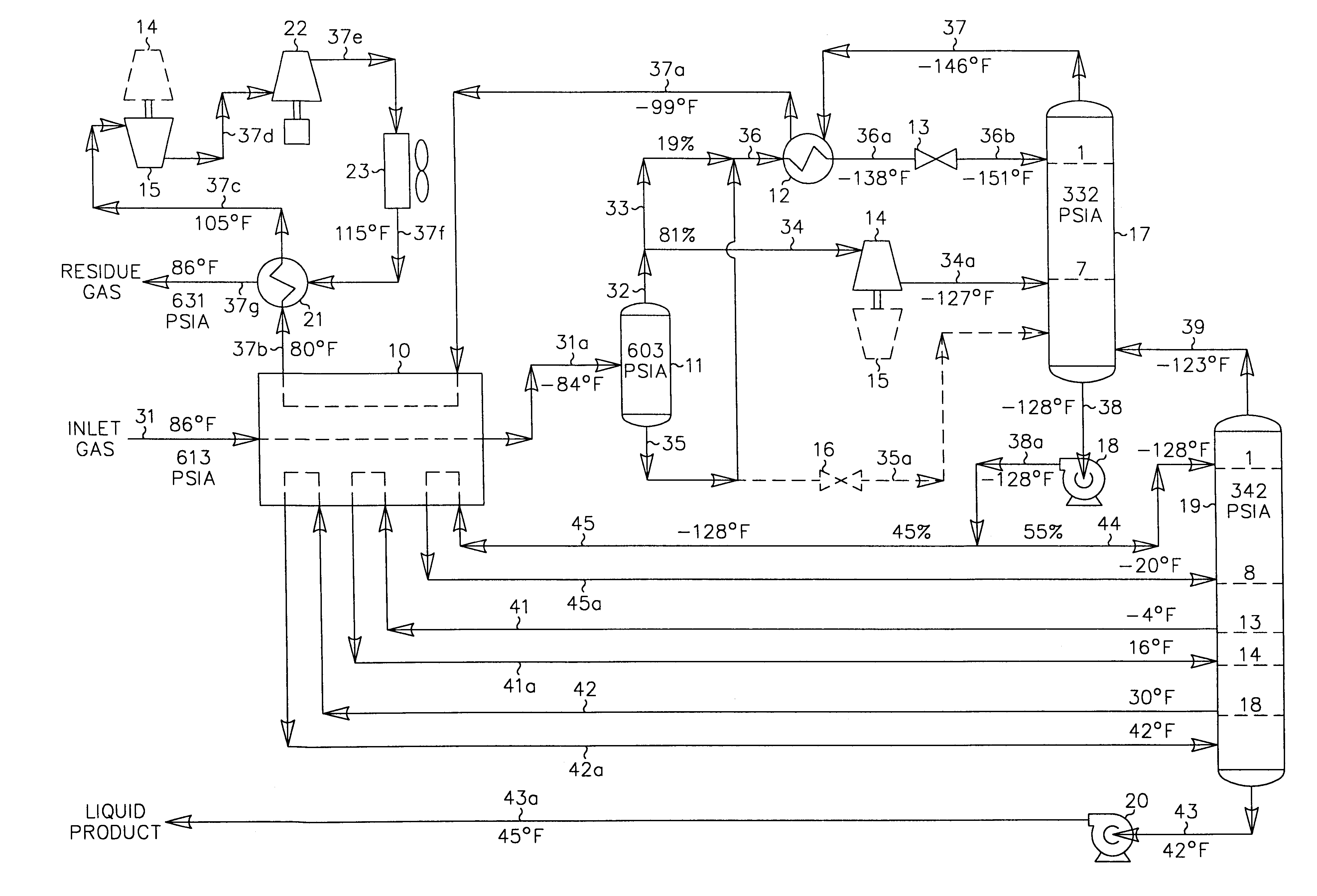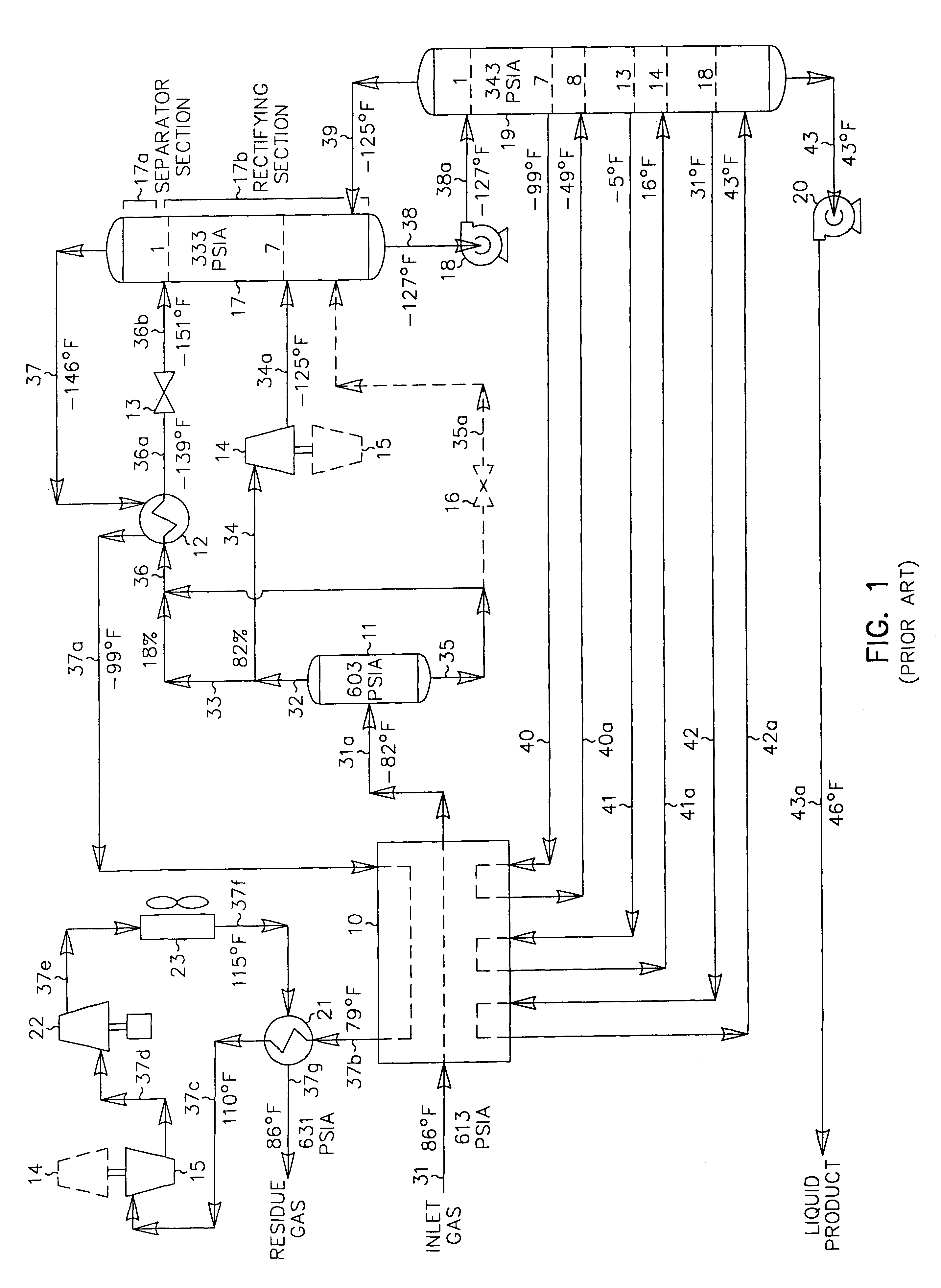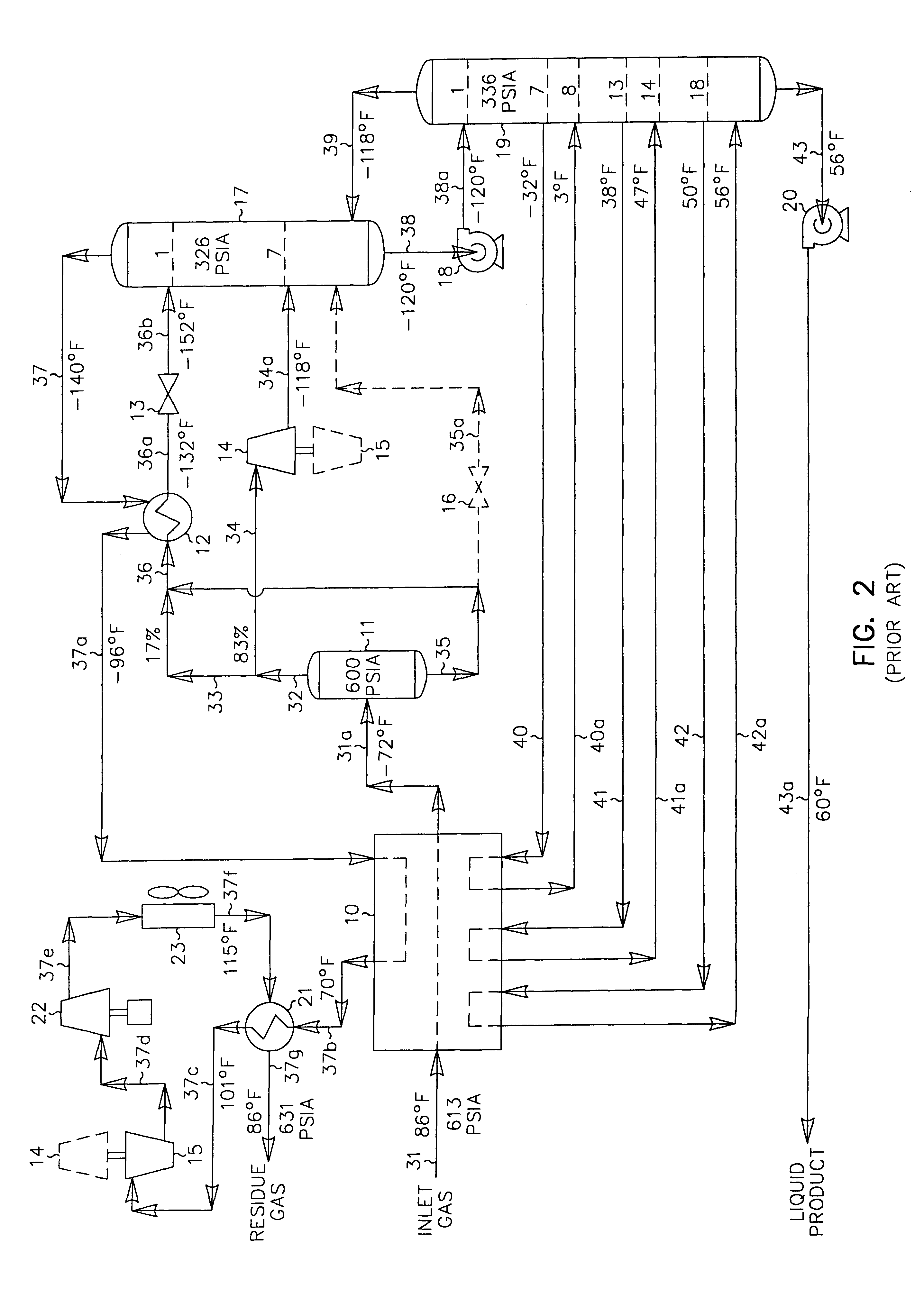Hydrocarbon gas processing
a technology of hydrocarbon gas and processing equipment, applied in the direction of rectification, condensation, lighting and heating equipment, etc., can solve the problems of not only the capital cost of the plant, but also the operating expense of the plant, and the effect of ethane vapor is much less
- Summary
- Abstract
- Description
- Claims
- Application Information
AI Technical Summary
Benefits of technology
Problems solved by technology
Method used
Image
Examples
example 2
In those cases where the carbon dioxide content of the liquid product is an issue (due to more stringent product specifications imposed by the client as in the FIG. 2 prior art process described previously, for instance), the present invention offers very significant recovery and efficiency advantages over the prior art process depicted in FIG. 2. The operating conditions of the FIG. 3 process can be altered to reduce the carbon dioxide content in the liquid product of the present invention as illustrated in FIG. 4. The feed gas composition and conditions considered in the process presented in FIG. 4 are the same as those in FIGS. 1 and 2. Accordingly, the FIG. 4 process can be compared with that of the FIGS. 1 and 2 processes to illustrate the advantages of the present invention.
In the simulation of the FIG. 4 process, the inlet gas cooling and separation scheme is essentially the same as that used in FIG. 3. The main difference is that the plant controls have been adjusted to incr...
PUM
 Login to View More
Login to View More Abstract
Description
Claims
Application Information
 Login to View More
Login to View More - R&D
- Intellectual Property
- Life Sciences
- Materials
- Tech Scout
- Unparalleled Data Quality
- Higher Quality Content
- 60% Fewer Hallucinations
Browse by: Latest US Patents, China's latest patents, Technical Efficacy Thesaurus, Application Domain, Technology Topic, Popular Technical Reports.
© 2025 PatSnap. All rights reserved.Legal|Privacy policy|Modern Slavery Act Transparency Statement|Sitemap|About US| Contact US: help@patsnap.com



